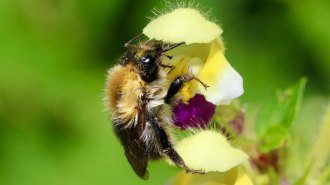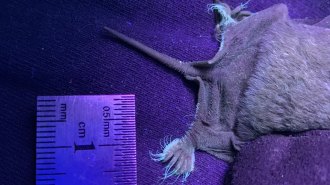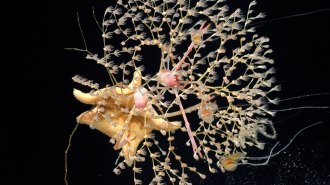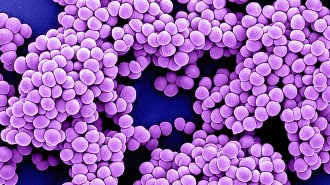Life
Sign up for our newsletter
We summarize the week's scientific breakthroughs every Thursday.
-
 Animals
AnimalsBumblebees lose most of their sense of smell after heat waves
A few hours in high temps reduced the ability of antennae to detect flower scents by 80 percent. That could impact the bees’ ability to find food.
-
 Environment
EnvironmentFiddler crabs are migrating north to cooler waters
The crabs are climate migrants and could be a harbinger of changes to come as more species move in.
By Luke Groskin -
 Paleontology
PaleontologyDespite new clues, this ancient fish has stumped scientists for centuries
The 50-million-year-old Pegasus volans isn't closely related to seamoths or oarfish, like some researchers have suggested. But what is it?
-
 Animals
AnimalsScientists piece together clues in a shark ‘murder mystery’
A missing porbeagle shark was likely killed by a great white. It’s the first known case of adult porbeagles being hunted by a predator, scientists say.
By Jason Bittel -
 Animals
AnimalsHere’s how an arthropod pulls off the world’s fastest backflip
While airborne, globular springtails can reach a spin rate of 368 rotations per second, high-speed camera footage shows.
-
 Microbes
MicrobesA fluffy, orange fungus could transform food waste into tasty dishes
The fungus thrives on everything from soy pulp to bland custards, turning them into digestible foods with a surprisingly pleasant flavor.
By Anna Gibbs -
 Animals
AnimalsIn a first, these bats were found to have toes that glow
Hairs on the toes of Mexican free-tailed bats fluoresce under UV light, a new study reports. The function of the toe glow is unknown.
By Jason Bittel -
 Life
LifeRemote seamounts in the southeast Pacific may be home to 20 new species
A recent expedition to the intersection of two undersea mountain chains has revealed a new seamount and a rich world of deep-sea biodiversity.
By Jake Buehler -
 Microbes
MicrobesMore than 100 bacteria species can flourish in microwave ovens
Swabs of 30 microwave ovens in different settings identified over 100 bacterial species, some of which could be pathogenic or cause food-borne disease.
-
 Oceans
OceansNational Geographic’s ‘OceanXplorers’ dives into the ocean’s mysteries
National Geographic’s documentary series ‘OceanXplorers,’ produced by James Cameron, invites you aboard one of the most advanced research vessels in the world.
By Abby Wallace -
 Health & Medicine
Health & Medicine50 years ago, antibiotic resistant bacteria became a problem outside hospitals
Infections from drug-resistant bacteria have skyrocketed over the last 50 years. Now, new technologies could help doctors save lives.
-
 Agriculture
AgricultureCan scientists make fruits and veggies resilient to climate change?
Combining traditional plant breeding with new genomics tools is allowing scientists to grow plants that are better adapted to a warming climate.
By Amanda Heidt